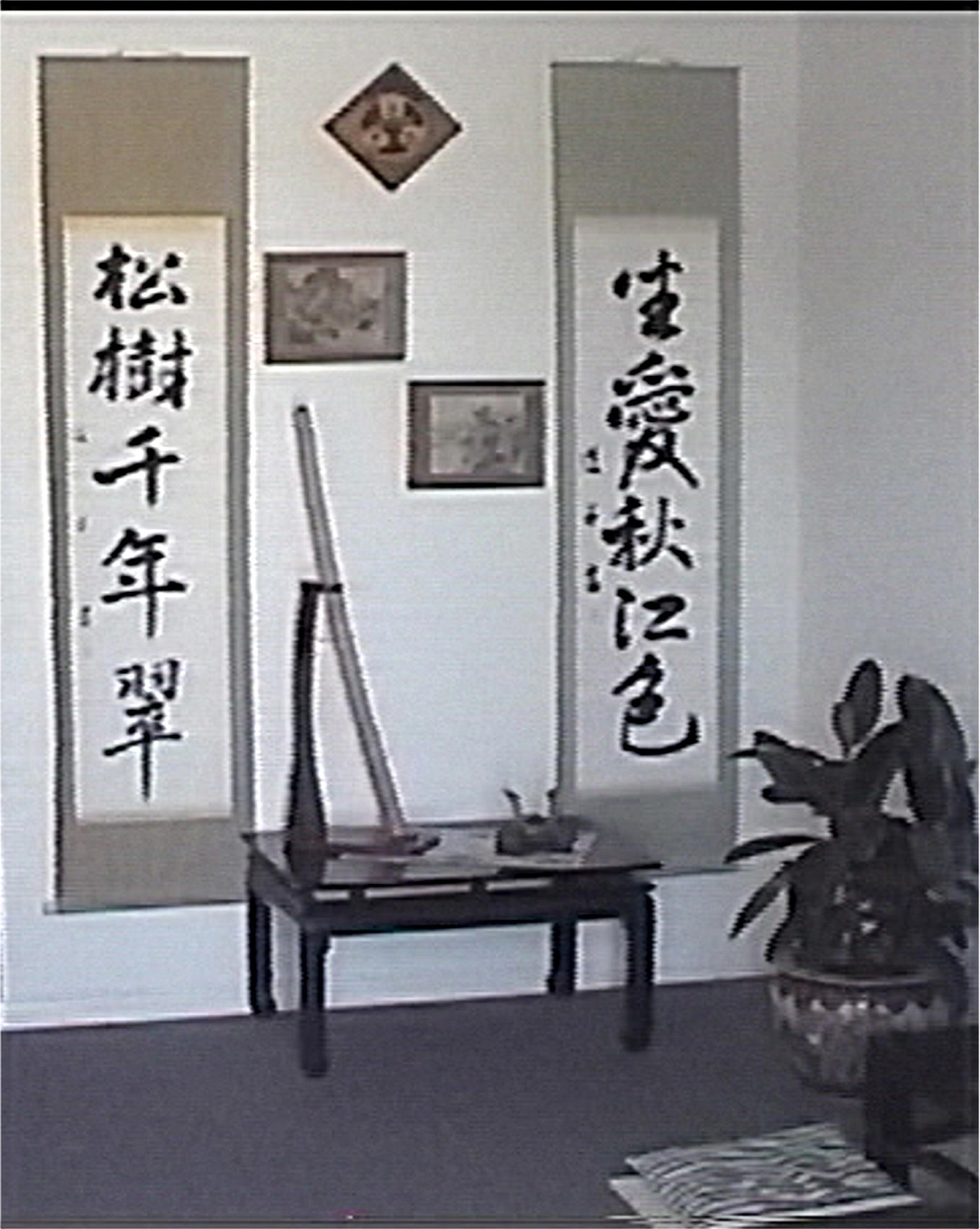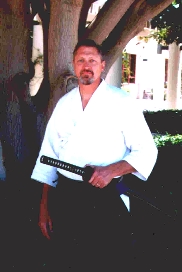
|
The martial discipline taught at the Shindenkan is known as "goshinjutsu"
(a system of self-defense).
The Shindenkan teaches that by indirectly resisting power, the
practitioner can effectively
defend attacks from larger opponents. This does NOT mean that a
student can ignore an opponent's size, strength or speed;
it means that the student must approach the reality
of self-defense by being "smarter".
The Shindenkan is unique in that cultural
tradition still holds a valid position within the
transmission of these teachings.
|
Our system transmits categories of training designed
to promote defensive capabilities that are both effective and efficient.
One of these categories teaches striking and avoindance techniques.
During atemiwaza (striking), contact with the opponent is minimal yet
powerful
while attacking vital areas of the body. Our taisabaki training
(avoidance/body
movement) teaches that
in order to cope with an opponent's unlimited and ungualified attack,
the use of
agile movements should be the number one priority...just as it has been taught
from ancient times.
Another catagory teaches the art of
control through pain compliance such as joint locks, chokes and
throws. The Shindenkan practitioner utilizes these methods in order
to weaken the opponent's power.
And yet another category teaches ground fighting where the student learns
how to control the opponent through position, leverage and
principles of technique, rather than brute force, to effectively
subdue the opponent.
A student's training would be lacking if only the physical was addressed.
It is absolutely critical that the student
learns the internal connection associated with their training.
Through our teachings, the
student learns that the mind and spirit of the person is just
as important to develop as a good
off-balancing technique.
 |
Petit sensei was introduced to judo when he was 9 and Japanese
karate at the age of 11. He began his training with Albert Church sensei in 1971, first
training under one of his black belt instructors then eventually under him and Kelly
sensei directly earning several black belt rankings within the Kamishin Ryu system.
By 1979 Petit sensei moved to Texas. In 1980, he received a late night phone call
from Robert and Linda Kelly informing him of Church sensei's death. Linda Kelly is
Church sensei's oldest daughter.
|
Ted Petit
Shindenkan Budo Renmei
|
Petit sensei continually seeks to advance his budo training
and knowledge. He has been retracing
Church sensei's steps within Hakkoryu jujutsu and trains with sensei
such as Gil Adams, Shihan Kaiden, Hakko Denshin Ryu. Adams sensei is the west
coast representative of the Hakko Denshin Ryu.
Petit sensei is a training disciple of Guy Power, Renshi seventh dan,
Toyama Ryu/ Nakamura Ryu.
Guy Power is the USA representative of
the International Batto-do Federation currently headed by Nakamura
Taizaburo, Hanshi tenth dan Toyama Ryu Iaido, and
founder of
Nakamura Ryu Batto-Do . Power sensei was introduced to Iaido (Mugai Ryu) by
Church sensei from 1970-1972.
Petit sensei began training in the art of
Omote Senke Chanoyu
(the art of tea) under
Ayako Minomo Sacks, shihan, in 2000. The tea ceremony is a unique expression
of Japanese culture that elevates the taking of tea to an art form.
A variety of refined objects is employed within the tea ceremony which includes:
kettles, tea containers, tea scoops, tea bowls, tea whisks, hanging scrolls, water
containers and flower vases. The harmonious arrangement and graceful use of these
objects are at the heart of the tea ceremony, for this is what shows the host's
appreciation for tea and feeling for beauty.


